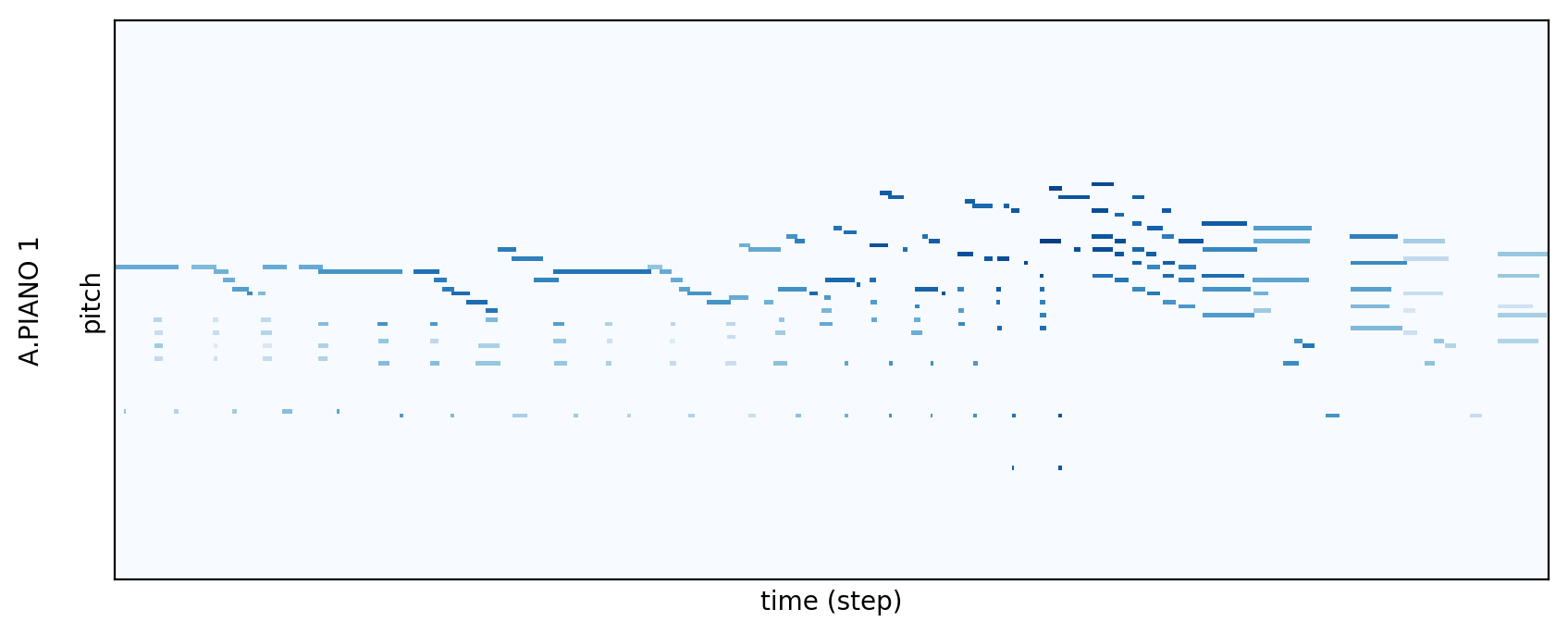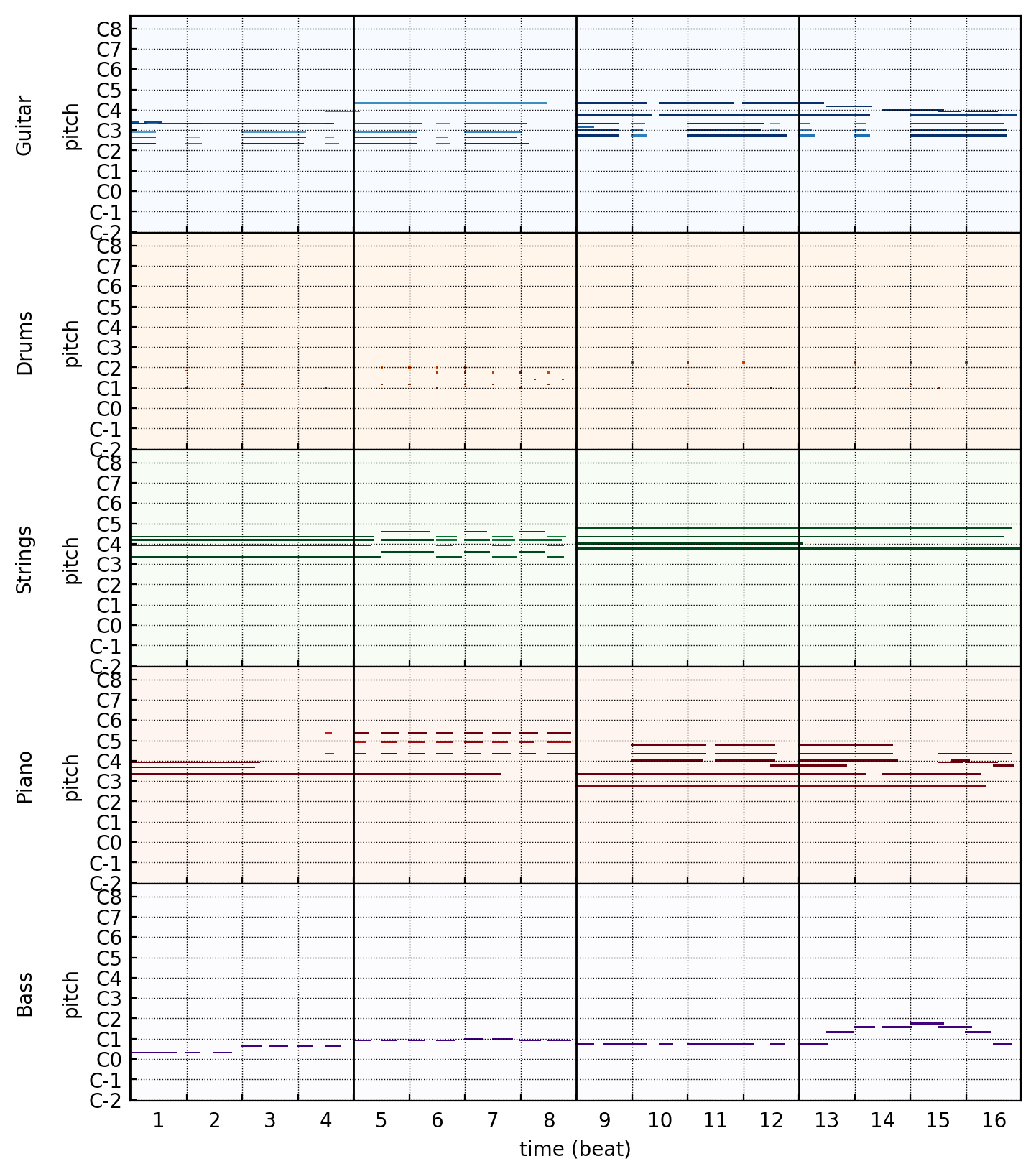Representation
Pianoroll
Pianoroll is a music storing format which represents a music piece by a score-like matrix. The vertical and horizontal axes represent note pitch and time, respectively. The values represent the velocities of the notes.
The time axis can either be in absolute timing or in symbolic timing. For absolute timing, the actual timing of note occurrence is used. For symbolic timing, the tempo information is removed and thereby each beat has the same length.
In LPD, we use symbolic timing and the temporal resolution is set to 24 per beat in order to cover common temporal patterns such as triplets and 32th notes. The note pitch has 128 possibilities, covering from C-1 to G9. For example, a bar in 4/4 time with only one track can be represented as a 96 x 128 matrix.
Note that during the conversion from MIDI files to pianorolls, an additional minimal-length (of one time step) pause is added between two consecutive (without a pause) notes of the same pitch to distinguish them from one single note.

Example pianoroll
Multitrack Pianoroll
We represent a multitrack music piece with a multitrack pianoroll, which is a set of pianorolls where each pianoroll represents one specific track in the original music piece. That is, a M-track music piece will be converted into a set of M pianorolls. For instance, a bar in 4/4 time with M tracks can be represented as a 96 x 128 x M tensor.

Example five-track pianorolls
The above pianoroll visualizations are produced using Pypianoroll.